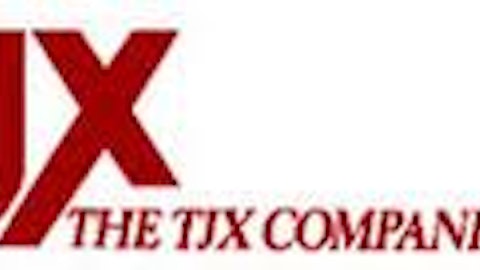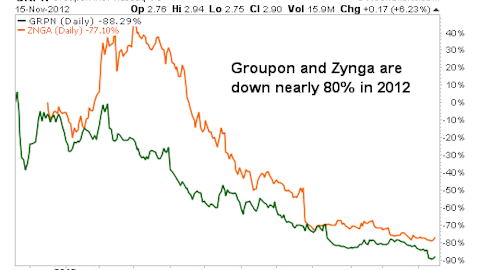On the surface, Dillard’s, Inc. (NYSE:DDS) seems like an attractive value stock. Shares trade for a little less than 13 times trailing EPS of $6.32, with better than 10% earnings growth expected for 2013. Moreover, same-store sales have increased for 10 consecutive quarters, driving solid earnings growth over the past few years.

Sales growth… for now
For the fourth quarter, comparable-store sales grew by 3% at Dillard’s. This was better than downmarket rivals: For example, Kohl’s Corporation (NYSE:KSS) posted a 1.9% comparable-store sales gain for the quarter. On the other hand, it represented a deceleration from Dillard’s 5% gain in the third quarter, and also trailed close competitor Macy’s, Inc. (NYSE:M) (where same-store sales increased by 3.9%) and higher-end chains like Nordstrom, Inc. (NYSE:JWN) (which achieved a 6.3% gain). In other words, while Dillard’s posted good sales, it trailed some competitors and saw sales growth slow somewhat compared to the prior quarter.
Unfortunately, Dillard’s, Inc. (NYSE:DDS) did not provide much commentary to illuminate these results. The earnings release features a brief statement from CEO William T. Dillard II that reiterates some of the company’s financial results for the quarter and full year, and Dillard states that he is “excited about the future.” The only other “guidance” provided was estimates of D&A expense, rental expense, interest, and capital expenditures. Whereas competitors at least took a stab at projecting sales and earnings trends for 2013, Dillard’s did no such thing.
What’s to come?
For 2013, Macy’s predicted relatively strong same-store sales growth of 3.5% and double-digit earnings growth. However, it was virtually alone among major retailers in projecting a strong 2013. Kohl’s expects net income to decline in 2013 on virtually stagnant sales. Investors could potentially discount this, since Kohl’s appeals to a lower-income demographic that may be more deeply affected by the recent payroll tax increase. However, upscale department store Nordstrom also projected a slowdown in sales growth, with comparable store sales expected to rise 3.5% to 5.5% as opposed to the high-single-digit gains seen in most recent quarters.
In other words, with the limited information available today, it is hard for investors to be confident in continued positive momentum at Dillard’s. Other retailers should get credit for providing forecasts and beating them — or missing them and having to explain themselves to the investor community later. When all the signs were positive, Dillard’s could perhaps afford to be secretive. With the outlook more cloudy today, investors should think twice before investing in this enigmatic department store stock.
The article Should You Avoid This Retail Enigma? originally appeared on Fool.com and is written by Adam Levine-Weinberg.
Fool contributor Adam Levine-Weinberg has no position in any stocks mentioned. The Motley Fool owns shares of Dillard’s.
Copyright © 1995 – 2013 The Motley Fool, LLC. All rights reserved. The Motley Fool has a disclosure policy.





